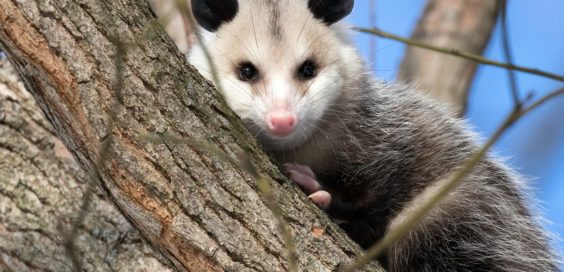
Creature Feature – The Virginia Opossum
Posted by Dustin Horton // February 26, 2020 // Articles, Creature Feature
The opossum is homely but remarkable. It’s mostly grayish-white, with dark legs, a pointy snout and hairless ears. Its long, naked tail is functional — it can be wrapped around a branch or used to clutch and carry leaves. A young opossum may even dangle upside down from its tail. Opposable “thumbs” help it to climb. The opossum ambles along woodlands at night, eating insects, worms, eggs, carrion, fruits, nuts and more. It adapts well to living near us, especially where it finds crops, pet food, bird seed and garbage. Cool fact: the opossum is helping to slow the spread of Lyme disease. It kills 90% of the ticks it encounters, and a single opossum can eat 5,000 ticks in one season. It can swim above and below the water, has immunity to certain snake venom, rarely develops rabies and has more teeth than any other North American animal – 50! To discourage an attack it will “play opossum,” (feign death). It doesn’t hibernate; but despite a creeping-northward range, it’s not well acclimated to cold winters and frequently suffers frostbite on the ears, tail and paws. The opossum is the only marsupial living in the U.S.; the female has a pouch, where her honey-bee sized babies are nourished and continue to grow. Between many predators and an ironic propensity to get struck by cars while eating roadkill, the opossum rarely survives past 2 years in the wild.
Article by Margie Manthey
Photo: Pixabay












